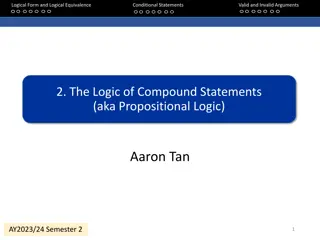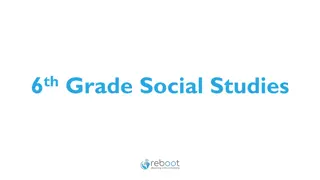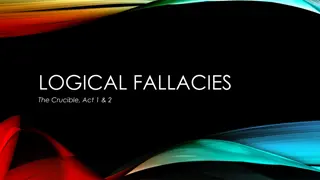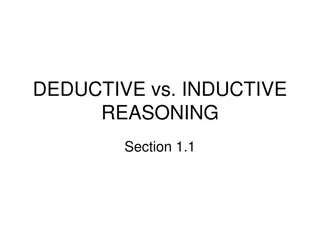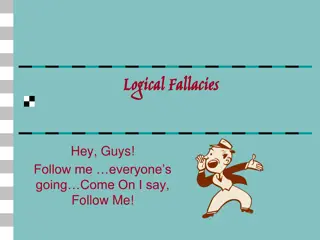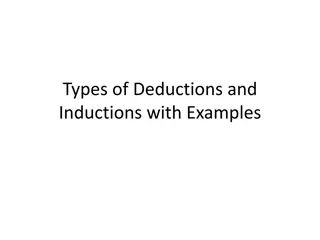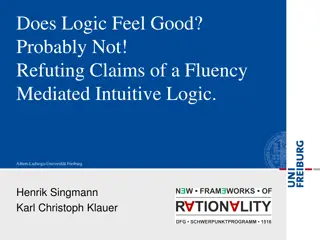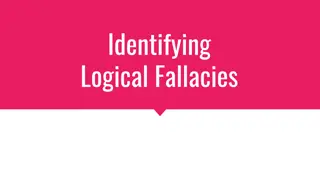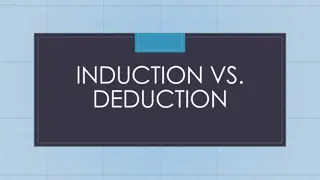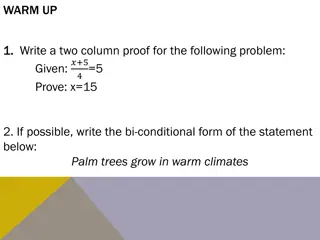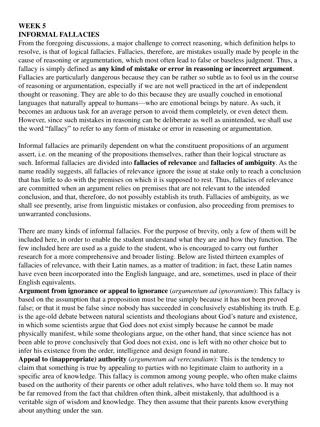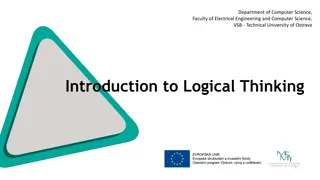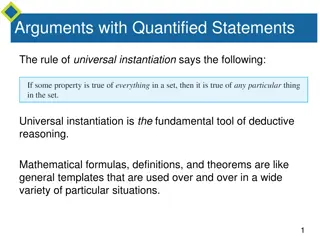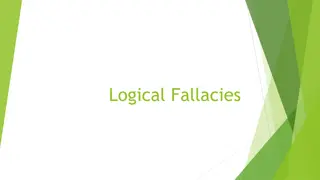Economic Models: Assumptions, Deductive Reasoning, and Logical Fallacies
Economic models utilize deductive reasoning to simplify real-world economic relationships. Assumptions vs. implications are key components, where assumptions reflect reality or are simplifying. This process helps identify conditions for specific outcomes to occur and distinguishes between consequential and inconsequential assumptions. Despite some assumptions not aligning with reality, models can still provide insights into what conditions are necessary for certain results to occur.
Download Presentation

Please find below an Image/Link to download the presentation.
The content on the website is provided AS IS for your information and personal use only. It may not be sold, licensed, or shared on other websites without obtaining consent from the author.If you encounter any issues during the download, it is possible that the publisher has removed the file from their server.
You are allowed to download the files provided on this website for personal or commercial use, subject to the condition that they are used lawfully. All files are the property of their respective owners.
The content on the website is provided AS IS for your information and personal use only. It may not be sold, licensed, or shared on other websites without obtaining consent from the author.
E N D
Presentation Transcript
Economic Models Economic Models Steven Suranovic George Washington University
Economic Models Economic Models Uses deductive reasoning to create simplified real-world economic relationships Models are simplifications! Presents these in mathematical and/or graphical form Can be used to identify the conditions needed for certain outcomes to arise
Deductive Reasoning Deductive Reasoning If X (a set of assumptions) is True then Y ( a set of conclusions or implications) follow logically If all dogs have four legs, and if Duke is a dog, then Duke has four legs.
A Logical Fallacy A Logical Fallacy What if an assumption is not true does it follow that the conclusions are untrue? Answer No For example, If all dogs do not have four legs, and Duke is a dog, it does not follow that Duke does not have four legs. He still might we just can t know for sure
A Logical Fallacy A Logical Fallacy In economic models then Just because some assumptions do not match the real world, does not mean we can dismiss all the conclusions But models will tell us what MUST be true to guarantee certain outcomes or results
Assumptions vs. Implications Assumptions vs. Implications All of the IFs in an economic model are the ASSUMPTIONS Generally there are numerous assumptions All of the THENs in a model are the IMPLICATIONS Generally there are many fewer implications
Types of Assumptions Types of Assumptions Reflect Reality vs. Simplifying Reflect Reality vs. Simplifying Assumptions that reflect reality are included because they are an observed feature of the real world. Assumptions that are simplifying are included to make the model tractable (that is, to make it easier to comprehend and solve)
Types of Assumptions Types of Assumptions Consequential vs. Inconsequential Consequential vs. Inconsequential If you relax (that is, change or eliminate) a consequential assumption, then an implication is no longer guaranteed. Often, assumptions that reflect reality are consequential If you relax (that is, change or eliminate) an inconsequential assumption, then the implications are not affected. Many assumptions that are simplifying are inconsequential
A A Map as a Model Map as a Model Maps can be transformed into a deductive exercise Namely, If (x,y,z, etc) are true, then (A, B, C, etc) follow
Hand Hand- -drawn Map Model drawn Map Model Assumptions Implications Lines are streets Street names are accurate Arrows are direction of travel Breakfast locations accurate O at intersections are stop signs Etc, etc. Travel along arrowed roads will lead you out of town If you want breakfast, you can stop at recommended shops along the way
Assumption Types Assumption Types Reflect Reality Simplifying Lines are streets O at intersections are stop signs Many streets and names missing Scale is inaccurate Bldgs are simple shapes Street names are accurate Arrows are direction of travel Breakfast locations accurate
Assumption Types Assumption Types Consequential Inconsequential Starting location is accurate Stop sign locations Street names are accurate Arrows are direction of travel Breakfast locations accurate Lines are streets O at intersections are stop signs Scale is not accurate
Topo Map Model Topo Map Model Assumptions Implications Green areas are forested Brown lines are contours (iso- elevation) Streets are double black lines Structures are small black circles Etc. Can use to determine slope/grade when hiking Can used to plan troop movements for war
Maps as Models Maps as Models Create different maps (models) for different purposes Some assumptions may be the same, some will differ There is no ideal map (model) Same is true for economic models


